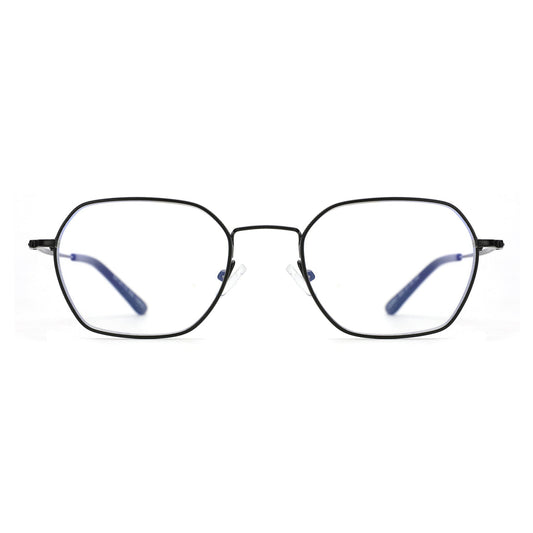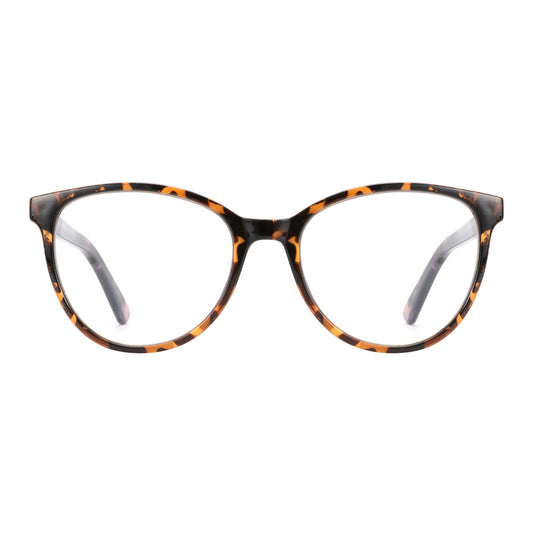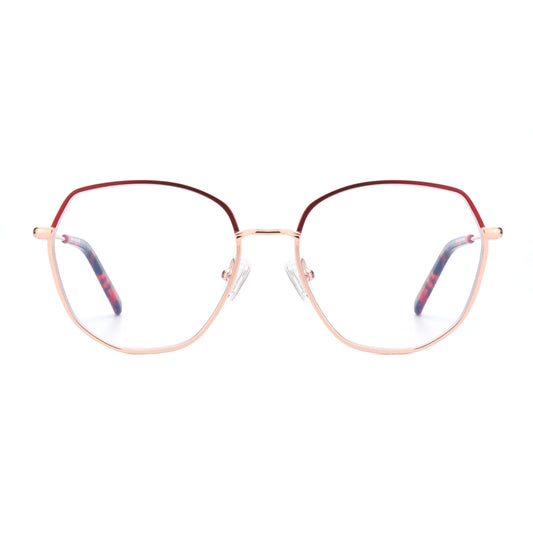What Is the Difference Between Polarized Sunglasses and Tinted Sunglasses?
When shopping for sunglasses, you'll encounter two trendy buzzwords: "tinted" and "polarized." While both types of lenses reduce the overall brightness of light, they function in very different ways when it comes to managing glare and enhancing visual clarity.
Understanding this distinction is crucial to choosing sunglasses that not only look good but also provide maximum possible protection and visual comfort for your eyes.

Tinted Sunglasses
Let's start with the simpler concept: tinted sunglasses. These are essentially lenses that have a colored dye built into them. The dye reduces the amount of visible light that can pass through the lens and reach your eyes. The darker the tint, the less light can pass through, and this can serve to make very bright conditions more comfortable.
Tinted lenses come in an enormous array of colors – gray, brown, green, yellow, rose, and more. Each color can potentially affect how you perceive contrast and colors, even though their primary function is to dim the brightness of your surroundings. What's interesting to note is that the darkness or color of the tint has absolutely no bearing on UV protection. A very dark-tinted lens without any UV coating offers no protection from harmful ultraviolet rays, and a light-colored or even clear lens can offer 100% UV protection if it is coated to do so.
Polarized Sunglasses: Tackling Glare Head-On
Polarized sunglasses do more than reduce brightness. They incorporate a chemical filter that is laminated onto or built into the lens. It is specifically intended to eliminate glare – the fiery, blinding light that bounces off flat, horizontal surfaces like water, snow, roads, or car hoods.
Here's the principle: sunlight tends to scatter in all directions. But when it is reflected off a flat surface, it tends to be polarized, with the light waves vibrating horizontally. The filter in polarized lenses is oriented vertically, so it shuts off this horizontally polarized light. This reduces glare significantly, improving comfort and clarity of vision. It is similar to a Venetian blind for light waves, admitting only the "good" vertically oriented light.
Polarized Sunglasses vs. Tinted Sunglasses: Key Differences Summarized
So, the main difference boils down to this:
- Tinted Sunglasses: Primarily reduce the overall intensity of light, making things appear darker. They do not inherently reduce glare unless they are also polarized.
- Polarized Sunglasses: Specifically filter out horizontally reflected glare, in addition to reducing overall light intensity (as they are also tinted). This leads to enhanced visual acuity and reduced eye strain in many situations.
It's possible for a lens to be tinted but not polarized. However, all polarized lenses are also tinted to some degree to reduce overall brightness.
When is Polarization Most Beneficial?
Polarized lenses offer significant advantages in specific environments and activities where glare is a major issue.
- Driving: Reducing glare from the road surface, other cars, or a wet road can dramatically improve visibility and safety. You'll notice less squinting and eye fatigue on long drives.
- Water Activities: For fishing, boating, or just being near the water, polarized lenses are a game-changer. They cut through the glare on the water's surface, allowing you to see into the water more clearly and reducing eye strain.
- Snow Sports: Snow reflects a huge amount of light, creating intense glare. Polarized sunglasses or goggles can make skiing, snowboarding, or even just walking in snowy conditions much more comfortable and safer.
- General Outdoor Use: Even for everyday activities like walking or relaxing outdoors, reducing glare can enhance visual comfort and make your surroundings appear sharper and more defined.

Are There Times When Polarized Lenses Aren't Ideal?
While generally beneficial, there are a few specific situations where polarized lenses might not be the best choice, or can present minor inconveniences:
- Viewing LCD Screens: Polarized lenses can sometimes make it difficult to see certain LCD screens, like those on some older smartphones, GPS devices, boat dashboards, or airplane cockpit displays. This is because these screens often have their own polarizing filters, and if they're oriented differently, they can create dark spots or make the screen appear black.
- Skiing in Icy Patches: Some skiers prefer non-polarized lenses in specific conditions because they feel the glare off icy patches helps them identify potentially dangerous spots. However, many still prefer polarization for overall comfort.
- Pilots: While pilots are advised against polarized lenses (as they can interfere with instrument visibility and reduce the 'glint' from other aircraft), Aviator sunglasses style remain a timeless choice for everyday wear—offering iconic style and UV protection without compromising safety for non-aviation use.
UV Protection: A Separate but Crucial Factor
It's worth noting that polarization and tint are in no way related to UV protection. Ultraviolet (UV) light is invisible but can be highly detrimental to your eyes, which can cause the likes of cataracts and macular degeneration.
Both polarized and non-polarized tinted sunglasses must be 100% UVA and UVB protected (typically labeled "UV400"). The degree of protection against UV is by virtue of an applied coating on lenses or by virtue of lens material, not by color, darkness, or polarization. Always read the label to ensure that your sunglasses provide adequate protection against UV.
Polarized Sunglasses vs. Tinted Sunglasses: What's Right for You?
If you spend a lot of time outdoors, especially driving, near water, or in snowy environments, the glare-reducing benefits of polarized sunglasses are usually well worth it. They offer superior visual comfort and clarity in these conditions.
If your primary concern is simply reducing overall brightness for casual wear, and glare isn't a major issue for your typical activities, then good quality tinted sunglasses with 100% UV protection might suffice and could be more budget-friendly.
Many people find that once they've experienced the clarity of polarized lenses, they don't want to go back, even for general use. The reduction in eye strain alone can be a significant benefit.
Conclusion about polarized lenses
While all sunglasses attempt to make light conditions more comfortable, polarized lenses offer a more advanced degree of glare elimination than normal tinted lenses. Tinted lenses obscure your vision by darkening it; polarized lenses clarify it by eliminating reflective glare. Always choose 100% UV protection, regardless, but for improved on-beat visual performance in most outdoor environments, polarized sunglasses are generally the go.






